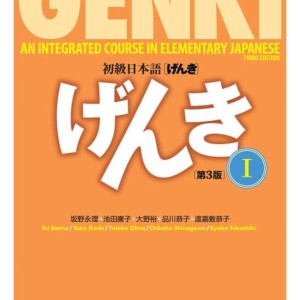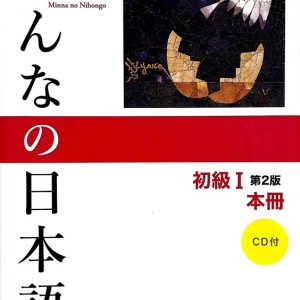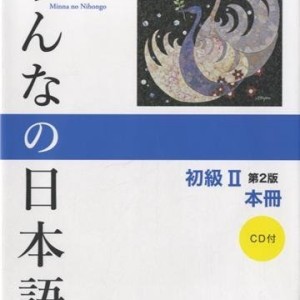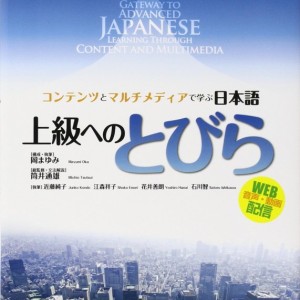این کتاب ویرایش سوم در یکی از معتبرترین مجموعه کتاب های درسی ژاپنی است: Genki: یک دوره یکپارچه در ژاپنی ابتدایی. این کتاب به 23 فصل با مضمون تقسیم شده است و شامل صحبت کردن ، گوش دادن ، خواندن و نوشتن برای پرورش توانایی کلی زبان است تأکید بر دقت ، تسلط و پیچیدگی متعادل است.
ویرایش سوم شامل پیشرفت های بسیاری است. هر درس در نسخه اصلاح شده دارای بخش جدیدی به نام "یادداشت های فرهنگ" است که دانش دانشجویان را از ژاپن و فرهنگ ژاپن از طریق اطلاعات در مورد زندگی روزمره در ژاپن بیشتر می کند. همچنین واژگان با بیشتر به روز شده اند واژگان مدرن و مفید. حتی اگر نکات گرامری ارائه شده در جلد یکسان باشد ، توضیحات اصلاح شده اند و درک آنها اکنون حتی آسان تر است. در نسخه اصلاح شده ، اشکال منفی صفت و عبارات اسمی که در زندگی روزمره بیشتر است تعداد مطالب تمرینی ارتباطی مانند گفتگوها افزایش یافته است تا دانشجویان دستور زبان را بیشتر انجام دهند و همچنین خواندن در بخش خواندن و نوشتن نیز به روزتر شده است تا بیشتر به ژاپن مدرن مرتبط شوند. در آخر ، کمک های صوتی قبلاً به طور جداگانه فروخته شده اند ، در CD صوتی mp3 موجود است که آماده نصب روی هر دستگاه پخش موسیقی است.
ساختار درس Genki 2:
یک لیست واژگان با تمام کلمات جدیدی که در فصل وارد شده است. هر کلمه شامل کانجی ژاپنی ، قرائت به زبان هیراگانا و ترجمه انگلیسی است.
یک بخش گرامر با توضیحات آسان به زبان انگلیسی و مثالهای فراوان برای هر گرامر. ترجمه انگلیسی برای مثالهای ژاپنی گنجانده شده است.
گفتگویی بین قهرمانان داستان. خواندن برای ترجمه کانجی و انگلیسی گفتگوها گنجانده شده است.
یک بخش تمرین که مهارت های خواندن ، نوشتن ، صحبت کردن و گوش دادن شما را با همه چیزهایی که در این فصل آموخته اید از جمله دستور زبان ، کانجی و واژگان جدید به چالش می کشد.
یادداشت های فرهنگ که جنبه های خاصی از فرهنگ ژاپن را توضیح می دهد.
This is the revised third edition book in one of the most highly regarded Japanese textbook series: Genki: An Integrated Course in Elementary Japanese. The book is divided into 23 themed chapters and covers speaking, listening, reading, and writing to cultivate overall language ability. It places emphasis on balancing accuracy, fluency, and complexity.
The third edition includes many improvements. Each lesson in the revised edition features a new section called “Culture Notes" that further enhances students' knowledge of Japan and the Japanese culture through information on daily life in Japan. The vocabulary has also been updated with more modern and useful vocabulary. Even though the grammar points presented in the volume are the same, the explanations have been revised and are now even easier to understand. In the revised edition, negative forms of adjectives and noun phrases that are more common in everyday life have also been updated. The number of communicative practice materials such as dialogues has been increased to give students more grammar practice and the readings in the Reading and Writing section have also been updated to make them more relevant to modern Japan. Lastly, audio aids which were previously sold separately, have been included on an mp3 audio CD, ready to install on any music player.
Genki 2 lesson structure:
A vocabulary list with all new words introduced in the chapter. Each word includes Japanese kanji, readings in hiragana, and an English translation.
A grammar section with easy to understand explanations in English and plenty of examples for each grammar point. English translations for the Japanese examples are included.
A dialog between the protagonists. Readings for kanji and English translations of the dialogs are included.
A practice section that challenges your reading, writing, speaking, and listening skills with everything you learned in the chapter including new grammar, kanji, and vocabulary.
Culture notes that explain specific aspects of Japanese culture.
Conversation and Grammar
Lesson 13 アルバイト探し(Looking for a Part-time Job)
Lesson 14 バレンタインデー (Valentine's Day)
Lesson 15 長野旅行 (A Trip to Nagano)
Lesson 16 忘れ物 (Lost and Found)
Lesson 17 ぐちとうわさ話 (Grumble and Gossip)
Lesson 18 ジョンさんのアルバイト (John’s Part-time Job)
Lesson 19 出迎え (Meeting the Boss)
Lesson 20 メアリーさんの買い物 (Mary Goes Shopping)
Lesson 21 どろぼう (Burglar)
Lesson 22 日本の教育 (Education in Japan)
Lesson 23 別れ (Good-bye)
Reading and Writing
Lesson 13 日本のおもしろい経験(Interesting Experiences in Japan)
Lesson 14 悩みの相談 (Personal Advice Column)
Lesson 15 私が好きな所 (My Favorite Place)
Lesson 16 まんが「ドラえもん」(The Manga Doraemon)
Lesson 17 オノ・ヨーコ (Yoko Ono)
Lesson 18 大学生活 (College Life)
Lesson 19 手紙とルール (Letters and Emails)
Lesson 20 猫の皿 (A Cat’s Plate)
Lesson 21 厄年 (Unlucky Ages)
Lesson 22 桜さんの日記 (Sakura’s Diary)
Lesson 23 顔文字と絵文字 (Emoticons and Emoji)
| نام کتاب | ژاپنی گنکی دو (ورژن جدید 2020) Genki 2 Third Edition |
| نویسنده | Eri Banno |
| ناشر | 3A Corporation |
| شابک | 9784789017329 |
| سال چاپ | 2020 |
| قطع کتاب | رحلی A4 |
| نوع جلد | شومیز |
| نوع چاپ | |
| تعداد صفحات | 397 کتاب اصلی و 132 ورک بوک |
| زبان کتاب | ژاپنی انگلیسی |
| تعداد جلد | 2 |
| سایر | |
- - نشانی ایمیل شما منتشر نخواهد شد.
- - لطفا دیدگاهتان تا حد امکان مربوط به مطلب باشد.
- - لطفا فارسی بنویسید.
- - میخواهید عکس خودتان کنار نظرتان باشد؟ به gravatar.com بروید و عکستان را اضافه کنید.
- - نظرات شما بعد از تایید مدیریت منتشر خواهد شد





